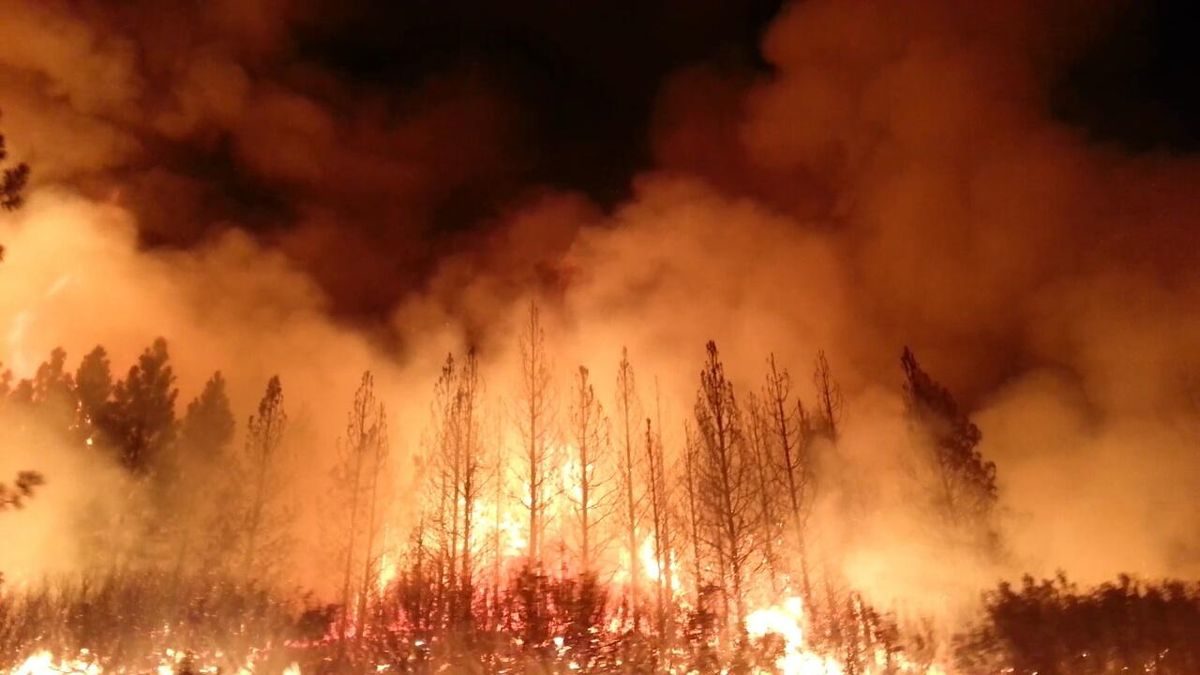By David Lazerwitz, partner, and Linda Sobczynski, associate, in Farella Braun + Martel’s San Francisco office. Mr. Lazerwitz is also chair of Farella’s Energy and Natural Resources Industry group.

The increasingly common occurrence of wildfires throughout California makes clear that wildfires pose a serious threat to the public and environment in the state. Thus, it should be no surprise that new laws and regulations are starting to respond to these threats. These efforts generally target preparedness and response to wildfire threats, and are working their way earlier into the project development planning process. Key among these is the California’s Governor’s Office of Planning and Research (OPR) amendment of Appendix G of California Environmental Quality Act’s (CEQA) regulations (or “Guidelines”) to help public agencies identify and evaluate such wildfire risks. These amendments along with a host of other updates to the Guidelines became effective December 28, 2018.
What does all of this mean for project developers engaged in large-scale projects such as renewable energy, transportation, housing, and infrastructure projects in California?

Assuming the project is not exempt from CEQA, before the lead agency can issue a permit for the project, it must evaluate the project’s impacts on the environment. These impacts may include “any potentially significant direct, indirect, or cumulative environmental impacts of locating development in areas susceptible to hazardous conditions (e.g., floodplains, coastlines, wildfire risk areas) . . . .” See CEQA Guidelines, § 15126.2(a) (explaining the types of significant impacts that should be discussed in an Environmental Impact Report).
The new amendments now guide agencies in how to evaluate wildfire risks as they begin preparing environmental review documents. This is a significant change from how agencies dealt with this issue before. Prior to these amendments, there were no specific wildfire-related questions that prompted agencies to think about how new projects will create or exacerbate wildfire risks. Now the Environmental Checklist Form, found in Appendix G of the CEQA Guidelines, includes new questions asking whether the relevant project is “located in or near state responsibility areas or lands classified as very high fire hazard severity zones.” (State responsibility areas are areas where the state has a financial responsibility to prevent and suppress fires.)
A map of these areas can be found. Although the map is helpful in assessing whether a project is located within these areas, it is not always clear when a project is located “near” one. For those decisions, OPR stated in its Final Statement of Reasons that public agencies “will be best placed to determine precisely where such analysis is needed outside of the specified zone.” In other words, when it is not obvious, the agency will use its judgment to decide if the project is “near” these areas.
What if the project is located in or “near” these areas? In that situation, the agency may rely on the checklist’s wildfire-related questions to assess whether the project will exacerbate wildfire conditions. For example, will the project have transmission lines that can spark in high winds? If yes, then the project could make existing conditions worse and the agency will need to thoroughly analyze this issue. What about the project’s location? Can it be built in a way to avoid a steep slope or prevailing wind patterns, which can exacerbate wildfire impacts?
If the project could worsen environmental conditions, are there mitigation measures that can be adopted to reduce wildfire impacts by maintaining or improving infrastructure, fuel breaks, and emergency water sources? How might these mitigation measures look? Senate Bill 901 provides some guidance to answer this question. This law requires electrical corporations to submit to the California Public Utilities Commission (Commission) wildfire mitigation plans. On May 30, 2019, the Commission approved Pacific Gas & Electric’s, Southern California Edison’s, and San Diego Gas & Electric’s, and other corporation’s wildfire mitigation plans, and on November 6, 2019, PG&E, SCE, and SDG&E filed progress reports on their wildfire mitigation efforts. These wildfire mitigation plans can provide insight into the types of mitigation measures developers could implement for their own projects. In general the plans consist of vegetation management, system hardening such as electric line replacement with ones that have lower wildfire ignitions, and “situational awareness” technology, such as weather stations and cameras. These and other measures may be effective ways to mitigate and hopefully avoid catastrophic fires.
Finally, if the goal is to avoid a high wildfire-risk area altogether, the developer should check with the relevant public agency to make sure the agency will not consider the project to be sufficiently “near” one.
The new laws and regulations addressing wildfire threats will impact California’s future renewable energy, transportation, housing, and infrastructure projects. A project developer should check the high fire hazard map first, and then reach out to counsel or consultants to navigate these ever changing environmental and legal landscapes.
This content is protected by copyright and may not be reused. If you want to cooperate with us and would like to reuse some of our content, please contact: editors@pv-magazine.com.









By submitting this form you agree to pv magazine using your data for the purposes of publishing your comment.
Your personal data will only be disclosed or otherwise transmitted to third parties for the purposes of spam filtering or if this is necessary for technical maintenance of the website. Any other transfer to third parties will not take place unless this is justified on the basis of applicable data protection regulations or if pv magazine is legally obliged to do so.
You may revoke this consent at any time with effect for the future, in which case your personal data will be deleted immediately. Otherwise, your data will be deleted if pv magazine has processed your request or the purpose of data storage is fulfilled.
Further information on data privacy can be found in our Data Protection Policy.